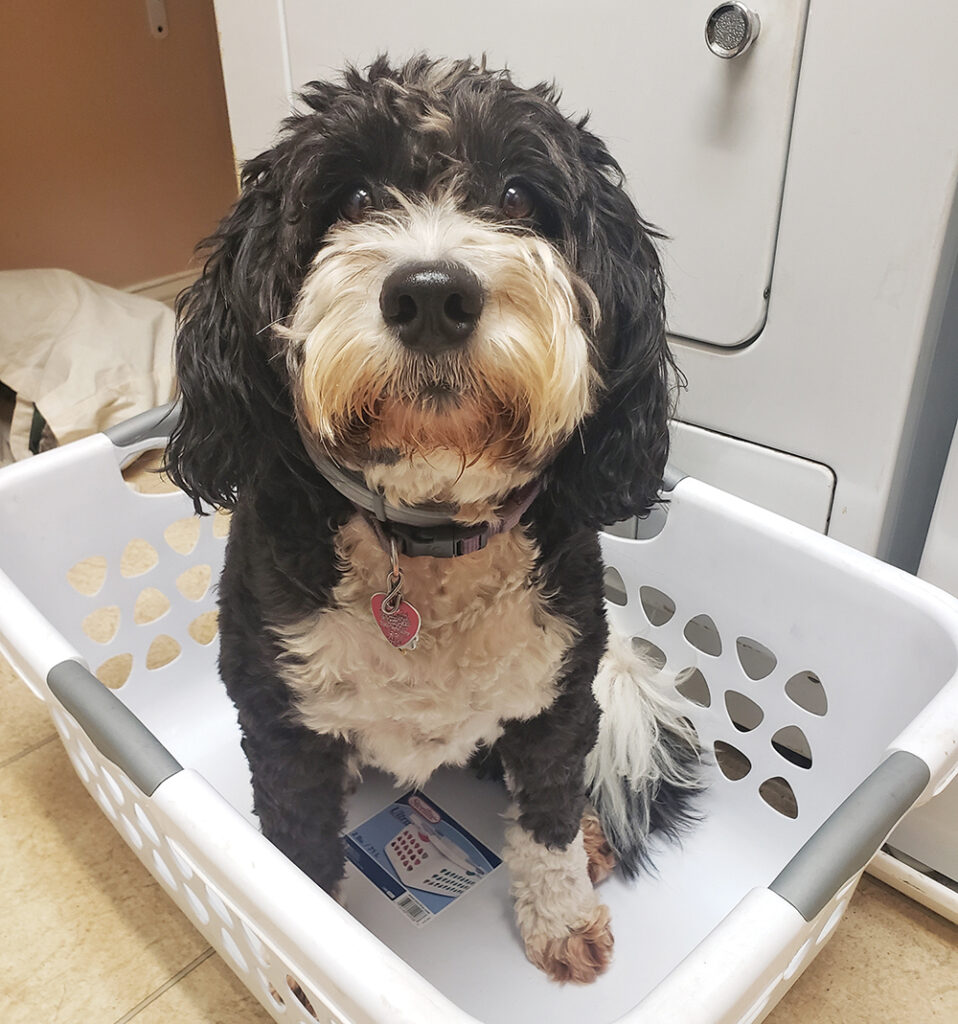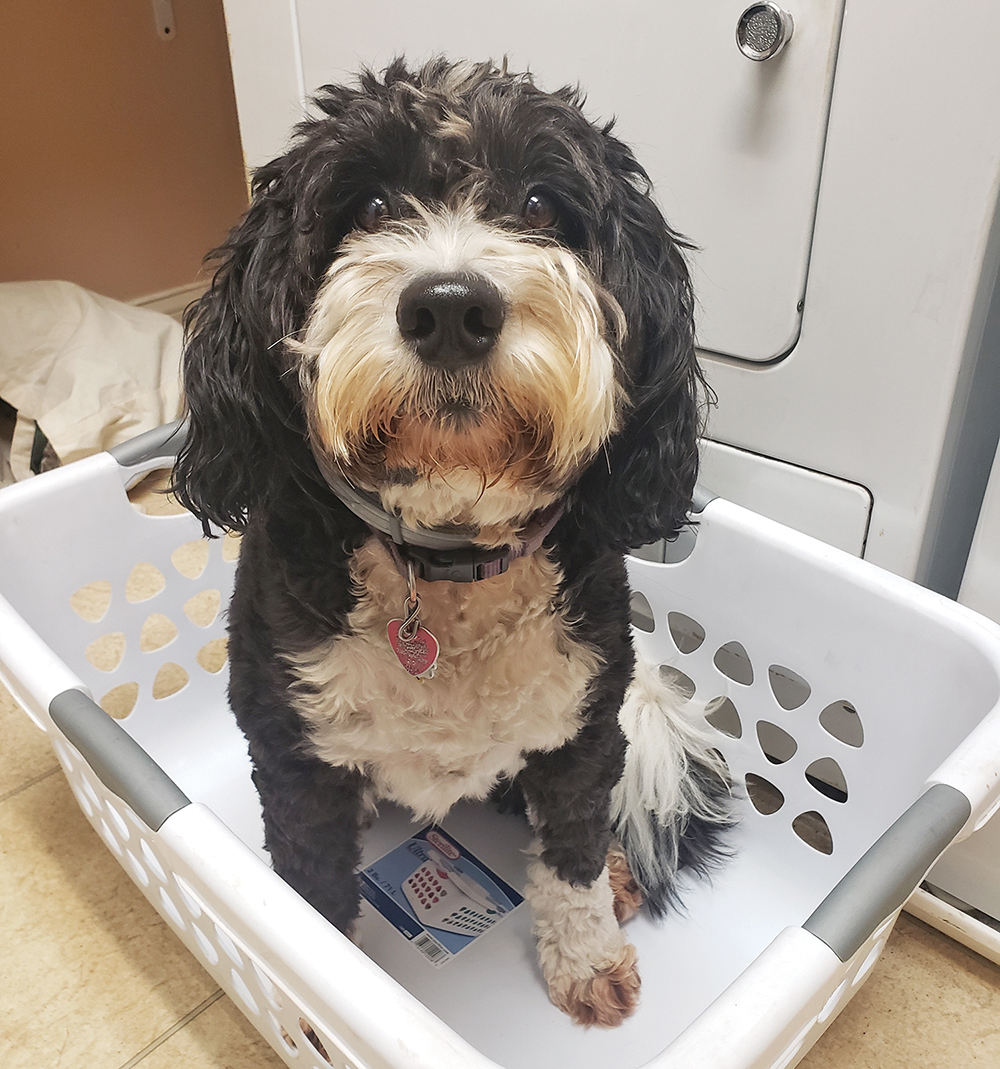
A delightful young couple who recently moved to the suburbs after years in the city, hired me for an organizing consultation. This involved touring their 60-year-old house and doing a deep dive into the best ways to use their space, noting what does not currently work and what can be improved. That is why I found myself standing in the couple’s basement assessing the usability of a cavernous, poorly lit, humid laundry room that could only be described as sorely neglected by the former owners. Having their own laundry room in their basement is a new concept for them as they always carted their laundry to a laundromat. As I studied the room carefully, I noted three walls had never been sheet rocked, the room had no heating system although the rest of the basement did, and there was a bare light bulb controlled by a dangling string. The wall across from the washer and dryer had old, wooden shelves. Since the basement had a separate furnace room and this space would not be used for utilitarian items like tools, creating updated storage for family needs made sense. On the opposite wall near the washer, there was no convenient space for laundry products. I imagined the previous owners kept a shaky, old table by the washer to hold their laundry products. It reminded me of a client whose laundry room was inside a bare, reach-in closet and was forced to position a table in the busy hall to hold her laundry products, which was a family traffic hazard. With my recommendation, she retired the table, put up heavy-duty hooks for a mop and a broom, and hung shelves on the wall of the closet above the washer/dryer. In the end, she had storage space and an attractive and organized laundry closet.
On the cement floor of the couple’s laundry room was an extremely dirty area rug left by the former owners. A dark 1970’s style lower kitchen cabinet with sharp corners leaned against a wall. It must have been relegated to the “dungeon” after the kitchen was remodeled, and no one sensed it could tip over or the pointy corners of the counter could stab an unsuspecting passerby. Looking up I saw a clothes rod that would be a comfortable reach for a basketball player. Emphasizing the positive, I said, “What a nice high ceiling you have in this basement.” It was time to tell this couple that they had a lot of work to do to make this a safe environment. “As your family grows, you will be spending extensive time in your laundry room. I want you to be safe and content here. I recommend you make some major improvements, which include sheet rocking the walls, installing proper lighting, adding heat and installing a floor. Finally, at some future point you could add storage by installing built-in cabinetry on the wall across from the washer and dryer.”
My clients were surprised. In their heads they were probably hearing “ka-ching, ka-ching.” While not up for a major renovation, they were open to hearing the best flooring for a laundry room. There are various opinions but Armstrong Flooring Inc. recommends using vinyl flooring because “it is a solid sheet, so it has few (or no) seams and therefore less opportunity for water to seep through” and it is “the most affordable option.” Reddit considers vinyl sheets to be out of vogue and praises ceramic and porcelain tiles for durability and low maintenance, as well as for the variety of colors and patterns available. If flooding is a concern, I have learned that ceramic tile is best.
I acknowledged that after spending their savings on a new home, they may see spending money to modernize a laundry room as excessive, especially since just having the washing machine and dryer inside their home is life-changing. As a result, I proposed some budget-friendly alternatives:
- Pull up and discard the dirty rug
- Haul away the old cabinet
- Paint the floor and put down a few anti-fatigue kitchen mats, available on Amazon
- Hire an electrician to install brighter lighting and update outlets and light switches
- Purchase a space heater
- Purchase a sturdy shelving unit or a cabinet to hold laundry and cleaning products. Note, toxic products should be housed in a closed cabinet. Before purchasing, verify the doors can be fastened with child locks.
- Purchase a standard folding table to use for sorting and folding laundry
- Anchor all cabinets and shelves to a wall as a safety precaution. (Yes, you are hearing the theme of safety frequently in this column. My husband says my motto should be “You can never be too safe.”)
Home owners who are fortunate to have large laundry rooms, often make the room do double duty. For example, place an extra freezer in the room or create storage to hold pet supplies or games.
If you’ve turned a closet or a nook into a laundry space or lined one up along a small wall, you know to use every square inch of available floor space. Further, it is key to determine the amount of vertical space you have. The higher the ceiling, the more vertical space to play with. A washer stacked on top of a dryer is a great way to use vertical space. According to Better Homes and Gardens magazine, “Install upper cabinets all the way to the ceiling to store products and a clothes rod for drying wet clothes.” Heavy duty magnets with hooks could be adhered onto the sides of your appliances to hold things such as mesh bags for delicate laundry or cups for stain removal products.
Here is a list of laundry room organization products that are intelligent and practical: A laundry drying rack that is collapsible and mounts on the wall, a magnetized clothes hanger stacker that mounts to the side of your appliance, an oversized three-compartment wheeled laundry cart, a fitted board placed above a front-opening, side-by-side washer/dryer for folding clothes, towels and sheets. I was most impressed with a heavy duty five-tier laundry room organizer that fits around and over a side-by-side washer/dryer which includes a rod to hang clothes and shelves to hold cleaning products. My favorite Pinterest idea was a wall-mounted ironing board placed in a shallow recess behind a cabinet door. It reminded me of what my grandmother had in her 1950’s kitchen, but at the same time, this one was sleek and space savvy. The runner up design idea was a side-by-side washer and dryer raised up on a platform to protect the floor from floods. A deep drawer below offered surprise storage space.
Some laundry rooms are equipped with a “dump sink,” a deep, wide plain-Jane sink that is a life saver when it comes to having a place to pour a pail of dirty water or to wash a mop. Have you ever seen a formally decorated laundry room with shiny wallpaper and petite sinks sporting dainty faucets? No room to wash a mop in that room! Only in a magazine would anyone glam up a laundry room! Although I do support installing a chandelier in a bedroom walk-in closet.
Laundry areas in tight spaces or nooks can be designed to allow the laundry to flow from the washer to the dryer to the laundry basket or counter for folding, while medium to large laundry rooms can be assigned two or more purposes. We each have a vision for our spaces. I want my clients to be happy, which in this case, is to keep their laundry room revamp reasonably priced and uncomplicated.
Ellen Smith of iDeclutter, LLC of Central Jersey is a residential Organizer and a member of NAPO, the National Association of Productivity and Organizing Professionals. For over 15 years, Ellen has helped people restore order and create calm in their homes and souls. See Ellen’s work on Instagram @ideclutterbyEllen. Contact Ellen for a complimentary phone consultation at ideclutter407@gmail.com.









